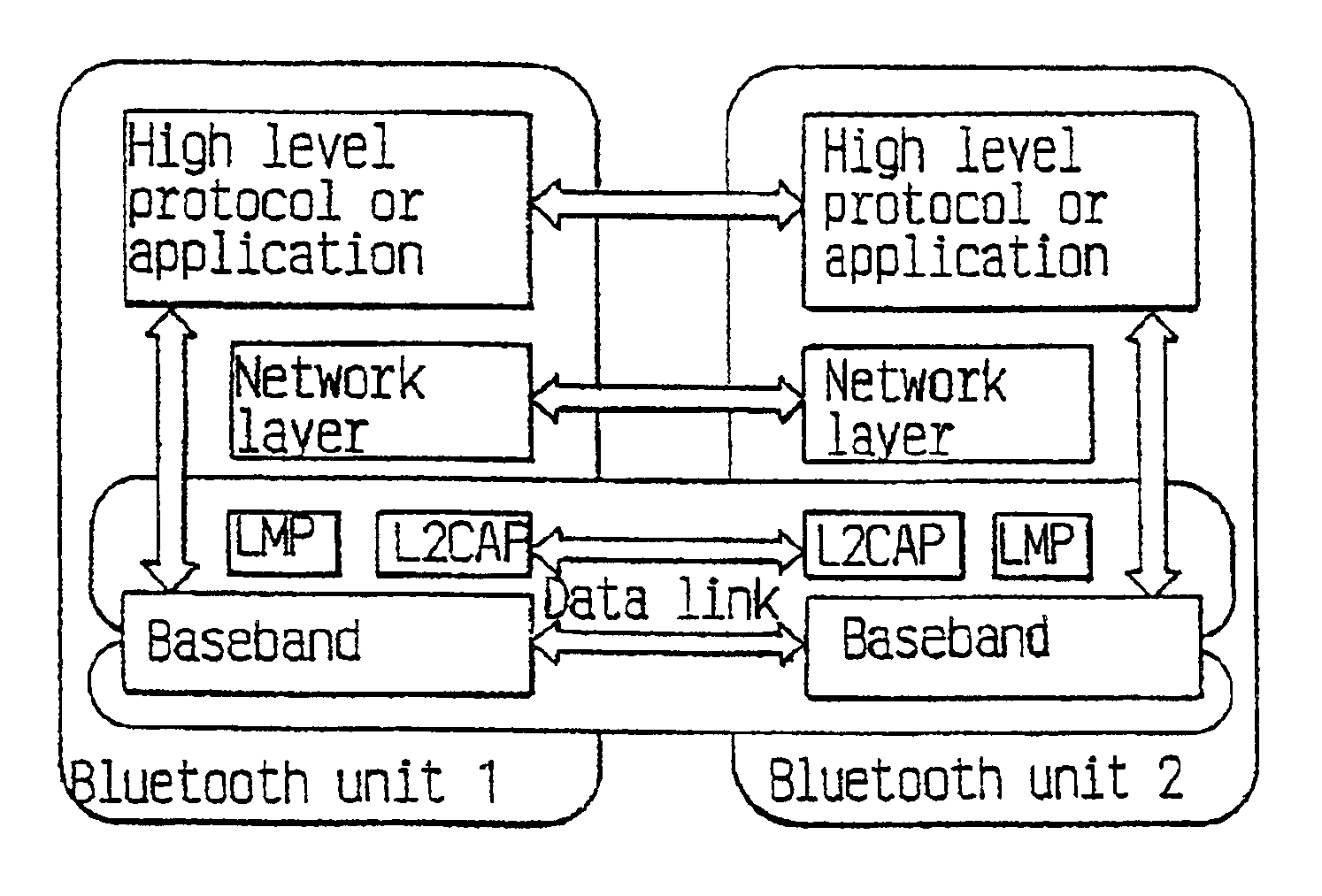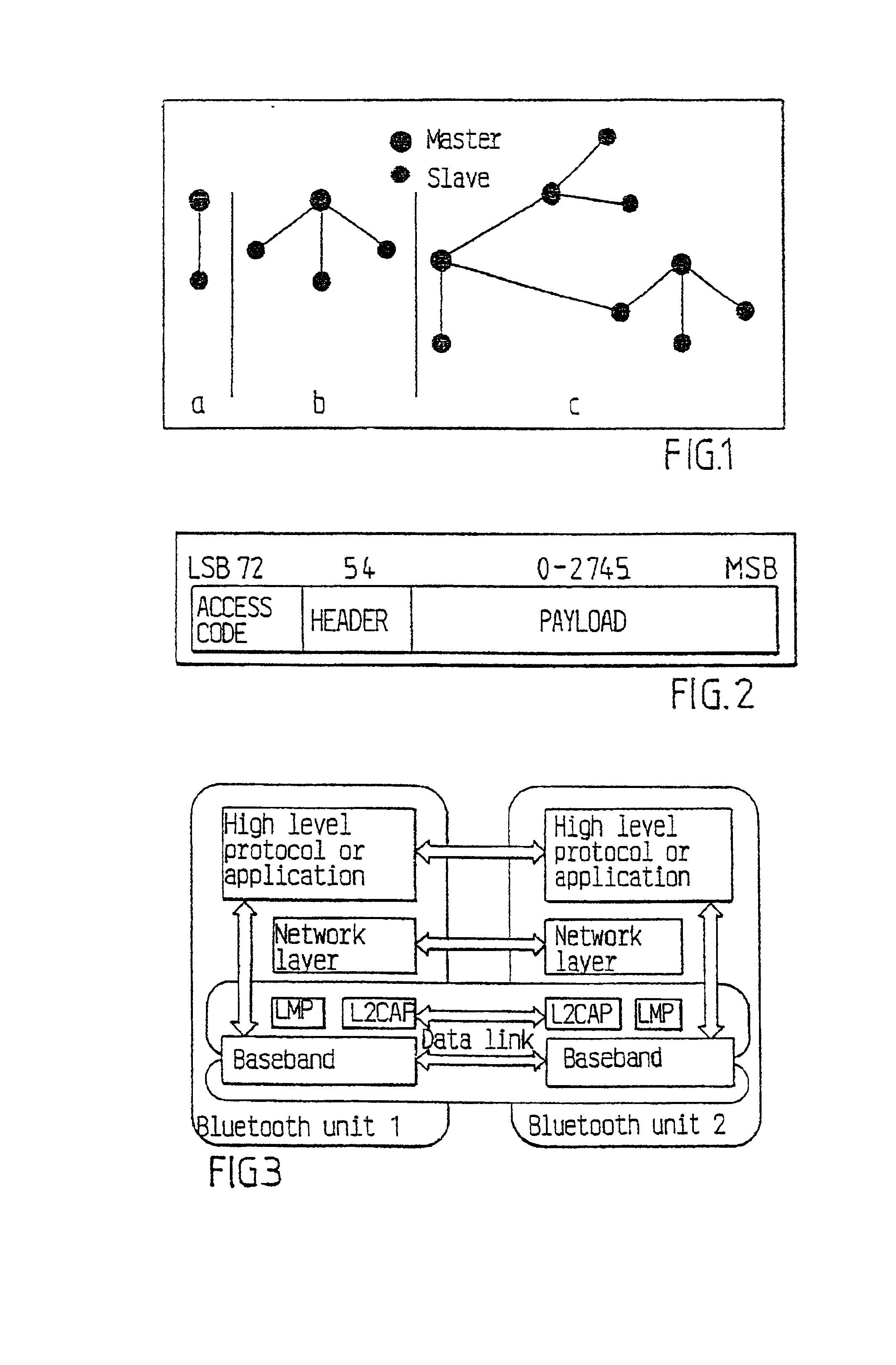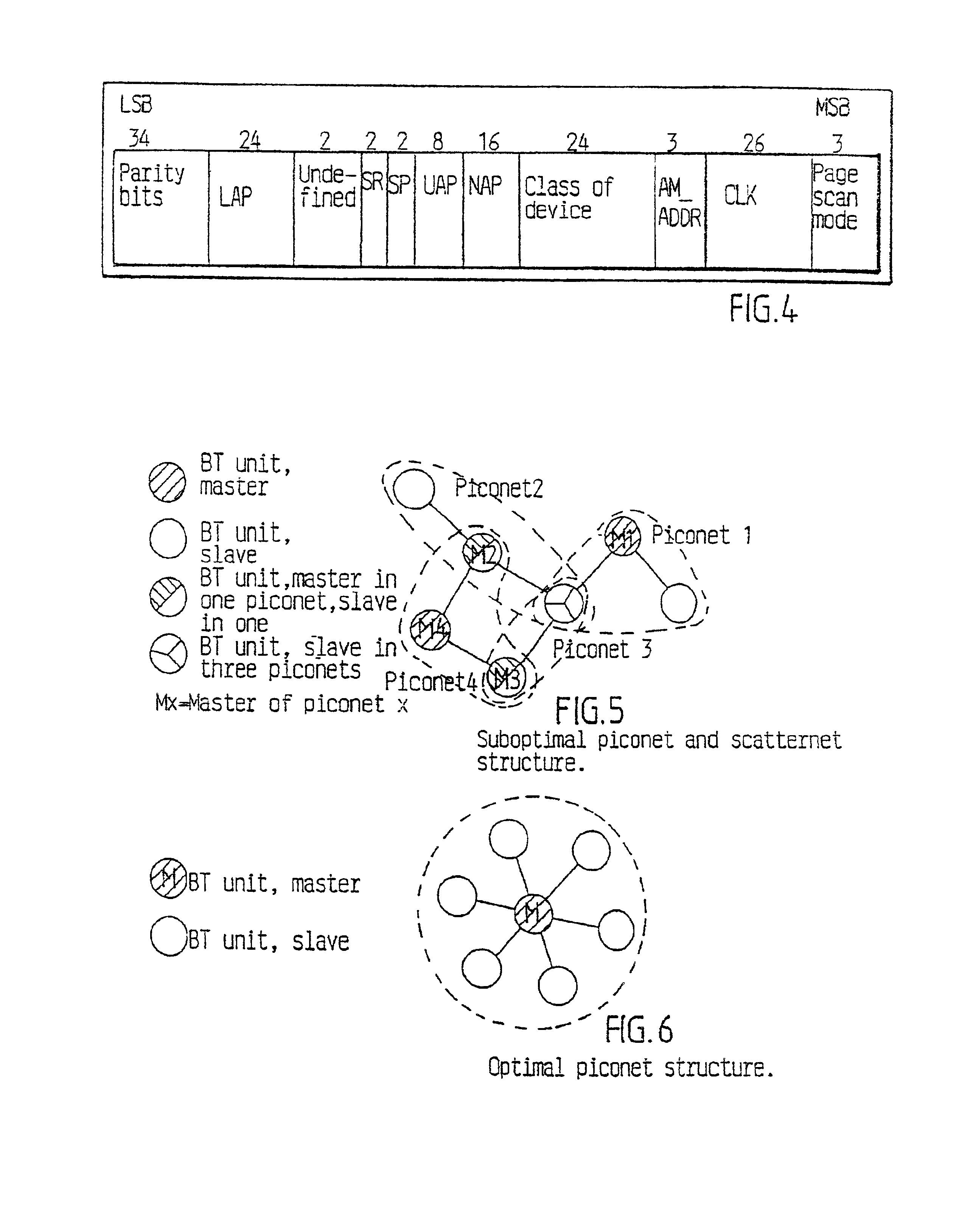Intelligent piconet forming
a piconet and intelligent technology, applied in the field of intelligent piconets, can solve the problems of redefinition of the entire piconet, no method is explicitly provided, and no ad hoc network can be formed, so as to improve the topology of the piconet and scatternet, and the connection procedure can be made more flexibl
- Summary
- Abstract
- Description
- Claims
- Application Information
AI Technical Summary
Benefits of technology
Problems solved by technology
Method used
Image
Examples
Embodiment Construction
[0054]An ad hoc network contains a master or master unit and at least one slave or slave unit. Another unit capable of connecting to the ad hoc network can approach or become located in the neighbourhood of the network and then a procedure can be used for the other unit to discover the status of the units already connected in the ad hoc network. This procedure can be called a neighbour discovery procedure and in the procedure an exchange of information related to the network is made.
[0055]In the following description the units described are generally assumed to be units adapted to communicate according to the Bluetooth specification and also terminology according to the Bluetooth specification will be used, as has already been the case in the major part of the discussion given above. However, it will also be briefly described how the procedures described can be applied to other general methods of establishing ad hoc networks.
[0056]The neighbour discovery procedure allows a unit appr...
PUM
 Login to View More
Login to View More Abstract
Description
Claims
Application Information
 Login to View More
Login to View More - R&D
- Intellectual Property
- Life Sciences
- Materials
- Tech Scout
- Unparalleled Data Quality
- Higher Quality Content
- 60% Fewer Hallucinations
Browse by: Latest US Patents, China's latest patents, Technical Efficacy Thesaurus, Application Domain, Technology Topic, Popular Technical Reports.
© 2025 PatSnap. All rights reserved.Legal|Privacy policy|Modern Slavery Act Transparency Statement|Sitemap|About US| Contact US: help@patsnap.com



